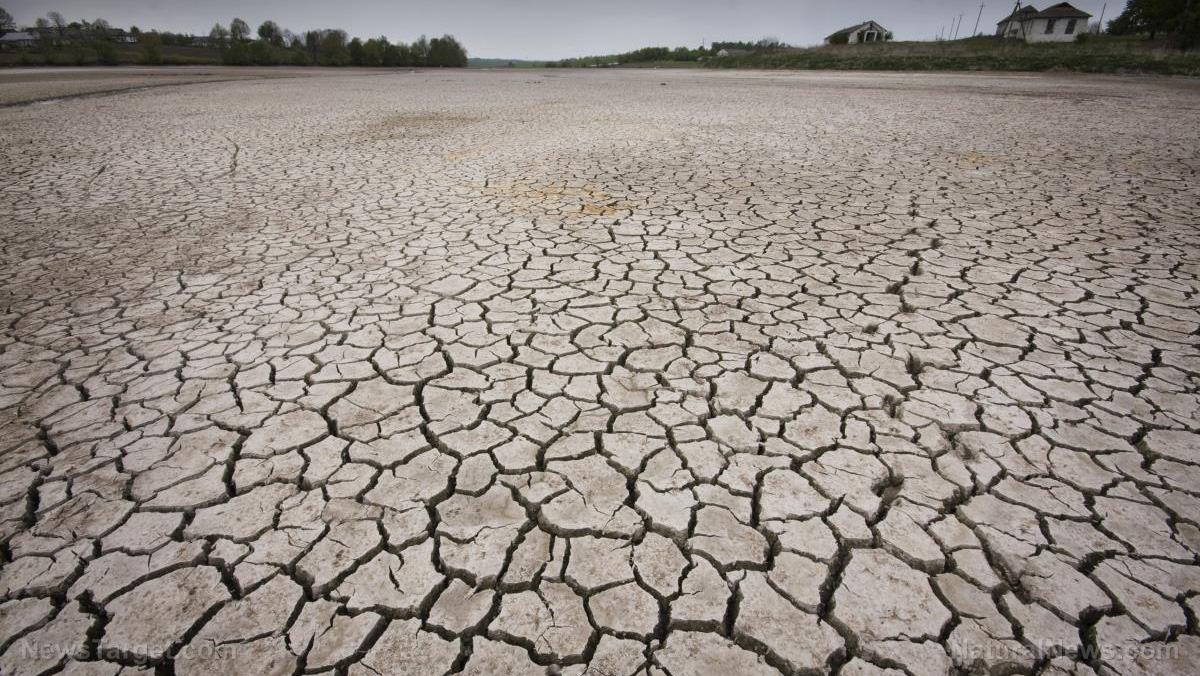Poverty forces girls to use cow dung as sanitary pads in socialist Zimbabwe
07/14/2022 / By News Editors

Extreme poverty has recently forced girls in rural Zimbabwe to use dried cow dung as an alternative to sanitary pads during menstrual cycles, Africanews reported on Monday.
(Article by Gabrielle Reyes republished from Breitbart.com)
“Sanitary pads are a luxury I cannot afford for my girls,” Vhene Gumedhe, who cares for her two granddaughters and three other girls, told the news agency on July 11.
Gumedhe and her charges reside in a rural village called Domboshava, which is located about 18 miles north of Zimbabwe’s national capital, Harare.
The impoverished woman explained to Africanews on Monday how she creates sanitary pads from cow dung, stating:
I take the dung, mould it and leave it to dry so that it easily absorbs the blood. The girls do not put the cow pattie directly on the skin. I wrap many clothes over it to avoid itching when placed on the underwear. Then I show them how to close their private parts to block the bleeding.
The girls have heavy flows with cycles that typically last six days. We prefer this method because cow patties soak up a lot of blood. Once soaked, we dispose of it privately by burying it in the ground. Our Shona culture does not allow that men see such things.
Gumedhe seemed to suggest that her cloth-wrapping method protects her girls’ from physical irritation when using the makeshift pads. A Zimbabwean welfare worker warned Africanews on Monday that girls who wear cow dung so close to sensitive areas often contract bacterial infections.
“The girls complain of itching and burning sensations in the vagina. When examined at the hospitals, we notice yeast infections, urogenital tract infections and early signs of cervical cancer due to insertion in the vaginal tract,” Theresa Nkhoma, a community childcare worker for Zimbabwe’s Ministry of Public Service, Labor, and Social Welfare, told the news outlet on July 11.
Gumedhe and her five charges subsist on less than one dollar per day. The family prioritizes buying meager foodstuffs over purchasing sanitary pads, and they are not alone. Half of Zimbabweans suffer from extreme levels of poverty, according to a July 2021 assessment by the United Nations Children’s Fund (UNICEF)

“[F]ood insecurity level remained high, with 61 percent of the total population and 71 percent of the rural population in severe or moderate food insecurity,” UNICEF reported of Zimbabwe at the time.
The Zimbabwean federal government has attempted to decrease the cost of menstrual pads by eliminating taxes on all sanitary products, Africanews observed on July 11. This effort, however, has been largely in vain due to the country’s hyperinflation.
“[P]eriod poverty is being exacerbated by inflation standing at over 191.6%,” the news outlet noted, citing data from the Zimbabwe National Statistics Agency.
Zimbabwe’s runaway inflation rate is a symptom of the corruption and economic mismanagement imposed on the nation by its socialist government. Zimbabwe has been ruled by the same socialist ruling party, the Zimbabwe African National Union-Patriotic Front (ZANU-PF), since it gained independence from Britain in 1980. The ZANU-PF’s poor governance has directly caused Zimbabwe to become one of the world’s poorest countries. The U.N. described Zimbabwe’s food insecurity as an example of “man-made starvation” in 2019.
Read more at: Breitbart.com
Submit a correction >>
Tagged Under:
big government, Bubble, Collapse, cow dung, Dangerous, debt collapse, economic collapse, economic crisis, humanitarian, Inflation, insanity, poverty, risk, socialism, women's health, Zimbabwe
This article may contain statements that reflect the opinion of the author
RECENT NEWS & ARTICLES
COPYRIGHT © 2017 COLLAPSE.NEWS
All content posted on this site is protected under Free Speech. Collapse.news is not responsible for content written by contributing authors. The information on this site is provided for educational and entertainment purposes only. It is not intended as a substitute for professional advice of any kind. Collapse.news assumes no responsibility for the use or misuse of this material. All trademarks, registered trademarks and service marks mentioned on this site are the property of their respective owners.





















